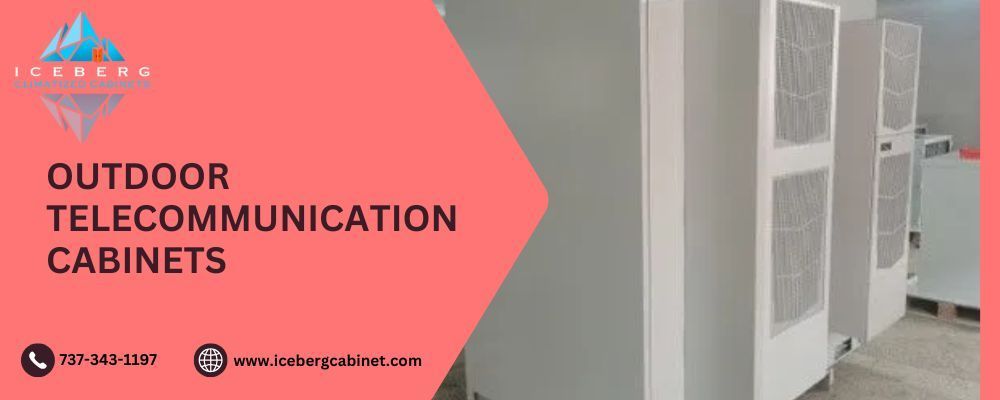What Should You Consider When Choosing a Server Rack Cabinet?
Ryan
Are you investing in the right server rack cabinet for your IT setup? For any business that wants to strengthen its IT infrastructure, the server rack cabinet is a core component. It has a direct impact on performance, security, and room for growth.
Choosing the right cabinet is not just about picking a standard model. It involves careful planning and evaluating several critical factors. These should match your current needs and also support your future goals.
Below are the key areas to assess when selecting a server rack cabinet for your business.
Size and Capacity
Size is one of the first things to consider when buying a server rack cabinet.
● Rack Unit (U) Size: Each rack unit is 1.75 inches tall. Server rack cabinets come in different sizes. These range from 4U to 48U or more. Your choice depends on how much equipment you need to install.
● Depth and Width: The cabinet must have the right internal dimensions. It should fit your servers, switches, and other components. It must also leave space for proper airflow and cable routing.
● Weight Capacity: The equipment can be heavy. Always check the cabinet’s load rating. A weak frame may collapse under pressure. This could damage vital IT hardware.
● Footprint: Space availability is important. If your office is small, a wall-mounted server rack cabinet saves floor space. In larger data centers, full-sized enclosures offer more capacity and a better fit with existing layouts.
Ventilation and Cooling
Proper cooling is essential to avoid damage and maintain performance.
● Airflow Design: Look for server rack cabinets with perforated doors or built-in vents. These features help air flow through the cabinet easily.
● Cooling in Small Spaces: In small offices or tight areas, use cabinets with built-in fans or exhaust systems. These help remove heat and maintain a safe temperature.
● Data Center Cooling: Larger setups may require advanced options. Liquid cooling systems or hot aisle and cold aisle layouts can manage high heat loads.
● Monitoring Temperature: Some server rack cabinets include sensors. These show real-time temperature data. IT teams can make fast changes if things start to overheat.
Security Features
Physical security is just as important as digital security.
● Basic Locking Features: Make sure the cabinet has locking front and rear doors. Side panels should also lock. This helps keep out unauthorized users.
● Advanced Access Controls: Some server rack cabinets include biometric locks or keycard entry. These systems offer stronger protection.
● Tamper-Resistant Cabinets: For critical data, look for cabinets with tamper-proof designs. These reduce the risk of physical interference.
● Environmental Alerts: Some cabinets have built-in alert systems. These notify you of changes inside the cabinet, such as a door opening or temperature shift.
● Placement and Surveillance: Install server rack cabinets in restricted-access rooms. Add surveillance cameras if needed. This creates another layer of protection.
Rack Mounting and Accessibility
Easy setup and regular maintenance are essential.
● Tool-Free Mounting: Many server rack cabinets now offer tool-less features. These make it quicker to mount or change equipment.
● Adjustable Rails: These allow for flexible setups. You can adapt the cabinet to different equipment sizes and types.
● Cable Management: Poor cable layout blocks airflow and confuses. Good server rack cabinets offer horizontal and vertical cable trays. These keep cables organized and out of the way.
● Compact Installations: Wall-mounted server rack cabinets are great for tight areas. They keep devices off the floor and make the best use of space.
Scalability and Future Expansion
Your IT infrastructure should grow with your business.
● Room for Growth: Choose a server rack cabinet with extra rack units. This makes it easier to add more hardware later.
● Expandable Design: Modular cabinets let you attach new shelves or panels when needed. You don’t need to replace the whole cabinet.
● Power Distribution: Ensure the cabinet supports modern Power Distribution Units (PDUs). Also, it should fit Uninterruptible Power Supply (UPS) units. These protect against outages and power failures.
● Future Additions: Leave room for more switches, patch panels, or cooling systems. Planning now helps avoid expensive upgrades later.
Compliance and Industry Standards
Following the standards ensures quality and compatibility.
● EIA-310 Compliance: Server rack cabinets should meet this standard. It ensures your equipment fits correctly. It also allows you to use parts from different vendors.
● Regulatory Needs: Some industries have strict rules. Make sure the cabinet meets any needed certifications, such as HIPAA or ISO standards.
● Environmental and Fire Safety: Some server rack cabinets offer sealed designs or fire protection. These add extra layers of safety. They’re useful in risky or sensitive environments.
Cost Considerations
Think long-term when considering the cost.





